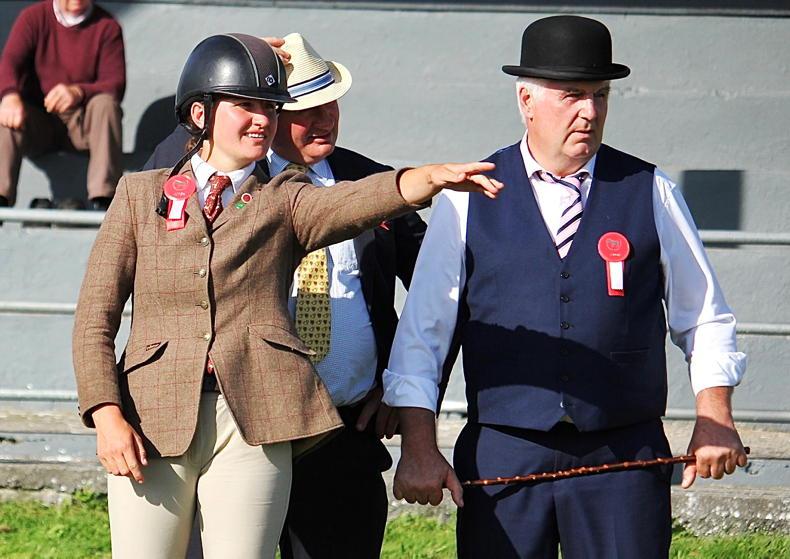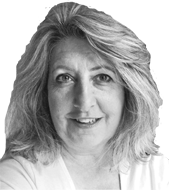GROWING up in Curraghduff, the love of horses was instilled in us from the time we could walk. My father [Tobias] worked horses, mainly Irish Draught mares, and bred a foal every year on the farm. Even after the tractor came along, he still used his faithful Draughts.
Horses were his true love. He thought nothing of taking a mare to Co Clare behind his bike to be covered with the right stallion, a distance of up to 100 miles, sometimes staying with his sister Josephine Ryan in Ballinahinch, Co Limerick, to break the journey.
I remember going through Thurles in the 1970s when the Munster Final was on, but we were going to look at a horse and not interested in a hurling match. Horses were our social interest.
We ventured into the showing scene at a young age, my brother, Paddy, and I showed our Mountain Heather mare at the RDS in 1978. Her foal by the thoroughbred Santas Sleigh won first prize, an accolade repeated as a yearling and two-year-old for his new owner, John McGrath from Armagh.
The 1980s rolled in on a tide of emigration. I went to Tallahassee in 1986 to Edward Blanton, who had bought a horse from us at Dublin. He was by the famous El Teide, who won the Croker Cup three years in-a-row for Denny Maher, who also stood the equally famous Draught stallion Legaun Prince, in Templemore.
I worked with horses, going to shows around Florida and Georgia, but the Big Apple was where everything was happening. I spent 15 years in New York and met my wife, Grainne. We wanted to bring our four children up here, so moved to Roscrea, an equal distance from both families, with Grainne being from Athlone.
Dungar Park is our Roscrea address and, for the last 20-plus years, lots of horses had the Dungar prefix. My first purchase was an Irish Draught mare, bred by my father and sold as a foal at Nenagh Show, where she was champion. Indeed, I wasn’t just buying back a mare, I was buying back the line, which was most important. I’m proud to say I’m an Irish Draught man through and through. Indeed, all the horses on the farm today are Draughts, except for two Connemaras.
1. The highlight?
To pick one isn’t easy. I’d have to say it was leading Woodland Boy in the RDS stallion class. It still stands out in my mind today, even above All-Irelands or Munster championships.
2. Favourite mare?
I remember going to Millstreet in 1979 to their Greenvale mare championship. Bernard Stanford’s Ballybane Grace was champion and her foal at foot was Grey Macha. I really was in awe of that mare, she was a picture to look at.
Before I came back to Ireland, I sent a mare to Grey Macha in Gort, but it wasn’t to be. He died while the mare was at stud without covering her. That horse was still in the back of my mind, so I took a mare to the great Agherlow, a Grey Macha son, at Eamon and Gladys McArdle’s Drumhowan Stud.
As luck would have it, she produced a filly foal. Dungar Grace is my favourite for many reasons, carrying the lines of both Grey Macha and my father’s mares, whose pedigrees he could trace all the way back to Brehan Law, one of the Draught studbook foundation sires.
I also have a young mare, Dungar Damsel (Dunsandle Diamond x Holycross), purchased as a foal from Martin Connolly in Sligo and due her first foal to Espresso Vision. Her dam was bred by that great Irish Draught man, the late Eddie Murphy. I’m very happy to have some of Eddie’s breeding, as she goes back to that great mare Ginger Grace.
3. Draught stallions, a labour of love?
Tipperary was always associated with horses, but we didn’t have an oversupply of Draught stallions in the 2000s. I purchased Woodland Boy from Stephen Niland in Balla. He covered a lot of mares, but died from a colic at just 19.
Trying to replace him, with Irish Draught horses fetching exorbitant prices during the boom, wasn’t possible. I bought a Blue Rajah x Moorpark Boy colt foal from Sean Adam in the North, put Dungar Blue Moon up for inspection and he was classified as S1. Subsequently, I had him castrated and sold as a riding horse to England. That Moorpark line is gone with him.
4. In or out?
I’ve been very lucky, as the Roscrea land is very good, dry and its easy to keep horses. Since moving here, this is the first winter I’ve had to keep the foals and youngstock in due to very wet weather. Usually, the foals are wintered out. I think its very important for in-foal mares to get exercise. They’re never stabled and foal outside. Older horses are housed in winter, as this gives us time to handle and break them.

“That one!” Alice and Philip Copithorne with John, right, at the IDHS national show in Ballinasloe last September \ Susan Finnerty
5. Your Irish Draught template?
A man said once ‘If you look over the gate and it doesn’t look like a Draught, it’s probably not’. To me, an Irish Draught is a robust stamp, built from the ground up. You need four good legs, well-proportioned to the body. Legs stand for everything. A good active walk, where the hindleg tracks well past the front leg, leads to a good trot and canter, very important for a riding horse.
A little bit hooky looks better than a too-straight hindleg and also gives more strength. “A good horse is never a bad colour”, so colour is not really important.
6. Greatest challenges for Draughts?
One of our greatest challenges is keeping breed diversity within a very small genepool. 90% of the modern Draughts go back to three horses. In my own experience trying to find outcrosses, breeding is almost impossible. Being on the [HSI] inspection panel in recent years, I honestly believe we’re improving the breed on certain things like tied-in at the knee and bone.
But I do believe we’re missing the boat by not allowing all Class 4 animals to be put forward for inspection and inclusion. With such a small Draught genepool, it’s critical that these horses are allowed forward. I’m not against the inclusion of some thoroughbred or Connemara into the genepool, but why do this when we’re not allowing horses, Draught-bred for generations, into our studbook?
7. Best advice you ever got?
I heard a man say once he wished his children could be educated like he was, going to fairs and markets around Ireland. No better education than the one you get going through life.
In my opinion, the best advice is to breed for yourself, meaning breed what makes you happy and you’ll always get a very saleable animal. I’ve taken that advice, taking my Agherlow mare to various sires for various traits: Gweebarras Dreamtime Star for the Blue Peter line and Tors Gentleman Farmer, in trying to get back bone.
8. It takes a team - who’s on yours?
Well, the only one who has got the bug is my son, Michael. He has a real passion and is very much into the Draught performance side. He and his wife, Mary, live nearby and, without his help and my good neighbours, the young Doyles and Noel Breen, it wouldn’t be possible to stand a stallion.
9. Breeding Draughts - would you do it all over again?
I’ve always had a passion for certain Draught lines, Donovan being one. I purchased a Donovan filly foal from Martin Collins, the ex-chairman of the Draught Society.
All-Ireland reserve champion at Roscommon the following year, she was sold to John Hennigan in Ballinrobe, came back up for sale and was bought by Jimmy Heery, with whom she had a very successful showing and breeding career.
On my first visit to Virginia Show, at the invitation of Draught enthusiasts, Declan Reilly and Oliver Higgins, I recognised Liskillen Countess (Donovan) and ended up buying her colt foal from Jimmy. That’s Espresso Vision and it will be exciting to see his first offspring on the ground this spring. I wouldn’t have it any other way.
10. Anniversary plans?
When you asked me to do this, I didn’t think I could. When I got started, I can’t say half what I wanted to say.
As someone once said, “You don’t have to go to bed to dream about horses”. I grew up watching the likes of Eddie Macken, Harvey Smith, Paul Darragh, Captain Raimondo D’Inzeo and my dream was to be an international show jumper like those guys.
On an important note, we’re coming up on the 50th anniversary of the foundation of the Irish Draught Horse Society in 2025. As the proverb says, “It takes a parish to raise a child”. We should put the Draught horse first and row in behind them for the betterment of all.


 This is a subscriber-only article
This is a subscriber-only article
 It looks like you're browsing in private mode
It looks like you're browsing in private mode











SHARING OPTIONS: